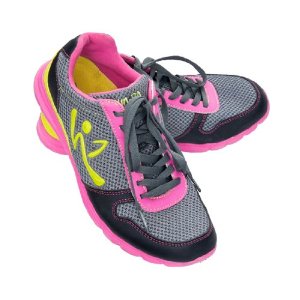 Usually when people pick out a pair of shoes, they go for two things: the right size and a look that they like. While this may work for a sexy pair of heels or some casual sneaks to wear with jeans, when it comes to fitness shoes, they aren’t a fashion statement: they are a piece of fitness equipment.
Usually when people pick out a pair of shoes, they go for two things: the right size and a look that they like. While this may work for a sexy pair of heels or some casual sneaks to wear with jeans, when it comes to fitness shoes, they aren’t a fashion statement: they are a piece of fitness equipment.
Just like when you invest in equipment for your home gym, everyone’s needs are different. Someone who works out in a gym is going to need different shoes than someone who prefers to run trails in the sunshine, or someone who prefers a game of pick up basketball is going to have different needs than someone who taking a Zumba class.
There are a lot of different kinds of shoes you can choose to workout in, but choosing the right type can mean the difference between a comfortable, effective workout, or pain and overuse injuries.
Style
If you run outside, you will of course want a running shoe for proper support. Once you start mixing workout styles and locations, however, things can get tricky. “The best shoes for the gym are the shoes that relate to your specific activity,” says Holly Perkins, Fitness Ambassador for New Balance. “If you go to the gym, run on the treadmill [instead of outside] and do some stretches, you will [still] want a running shoe.”
For general workouts at the gym, not including running, a cross trainer is your best bet because you want your foot to be low to the ground and not elevated like a running shoe will do. This is for both safety and effectiveness, as a cross trainer will activate your high hamstrings and glute muscles better.
“The best shoes for classes are either a dance shoe (if you are dancing or Zumba-ing), or a cross trainer,” says Perkins. “A cross trainer with allow you lateral stability, with cushioning for jumping, bounding and things like jumping rope. ”
The best sneakers for exercise will fit your feet even when your foot is swollen after exercise. Try going shopping at an athletic store at the end of the day, or after a workout, when your feet have more fluid in them, and be sure to wear the same type of socks you will be working out in to make sure you have enough room for your piggies. Having your feet measured often by a professional also isn’t a bad idea to ensure you are making the right choice.
Replacing Your Shoes
Outdoor runners should replace their shoes every 300-400 miles as worn out and unsupportive shoes can cause a whole host of injuries. If you are a heavier runner, you’ll want to stick closer to 300 miles, while lighter runners can usually last the full 400. Those who workout in a gym or use their shoes for sports like tennis and basketball can get a longer life from their sneaks.
If you don’t track your mileage, an easy way to tell if your shoes need to be replaced is to look at the midsole, or the inside of the shoe that creates cushion for your foot, which will break down before the treads of your shoes do.
Proper shoes for your workouts can make all the difference in your comfort and sometimes even pain levels. If you are unsure if your shoes might be to blame for injuries and pain, head to your local athletic shoe store and ask for a proper fitting and recommendation.

